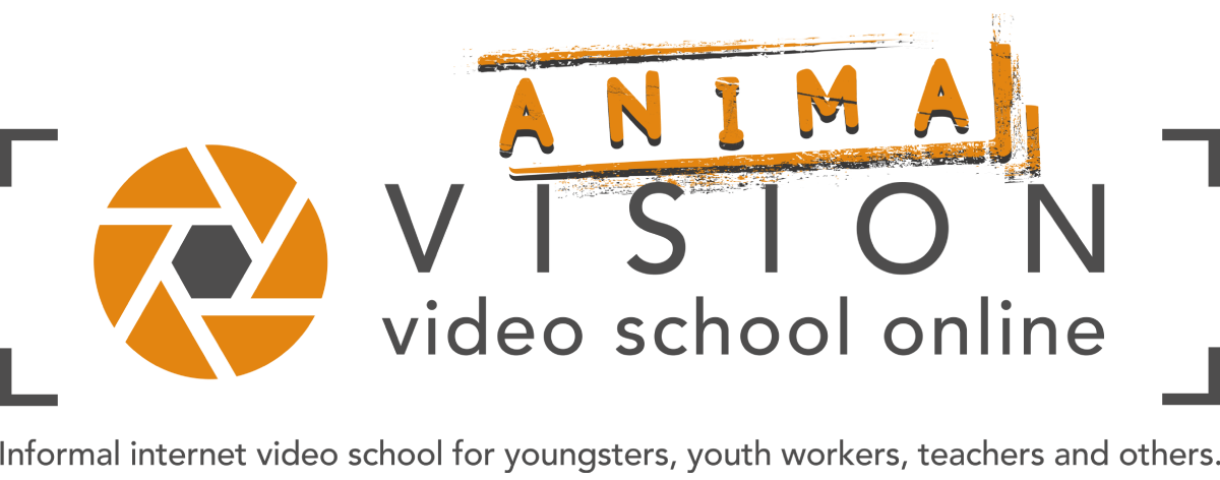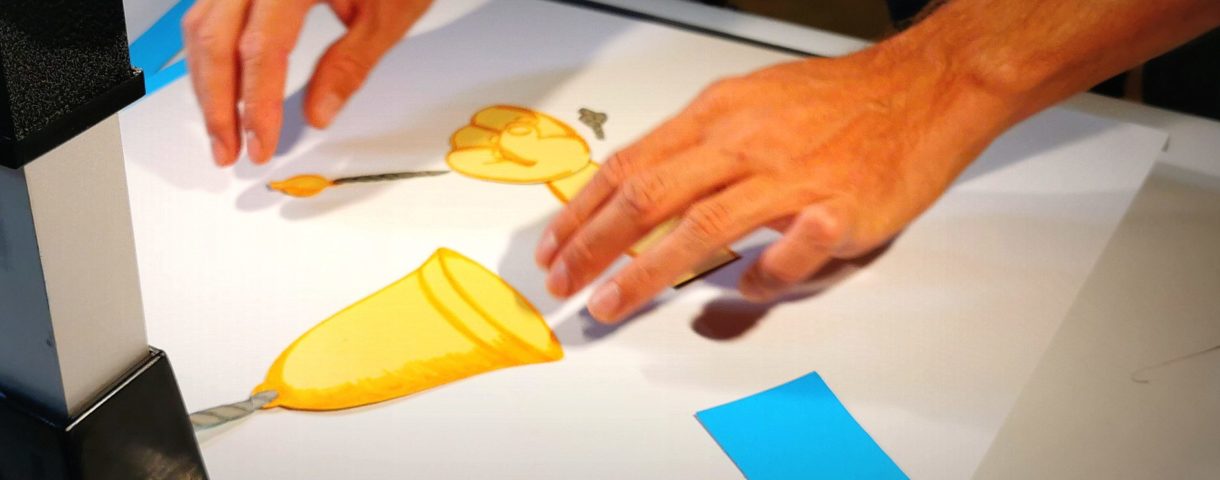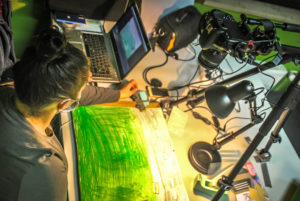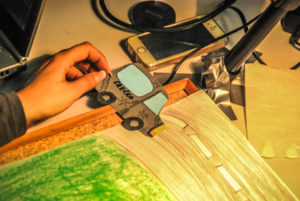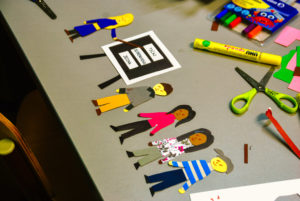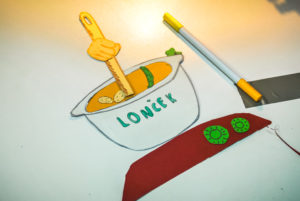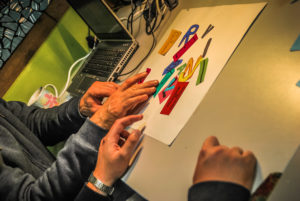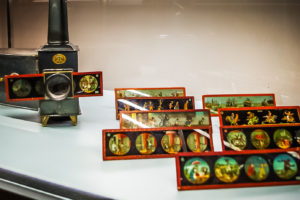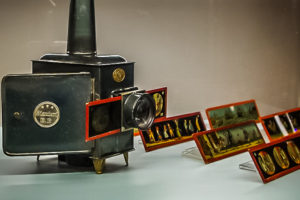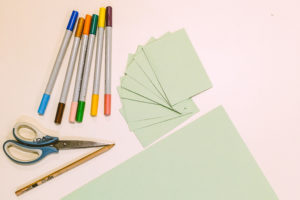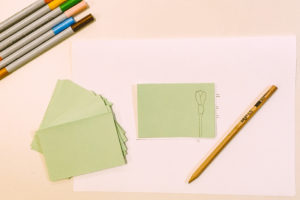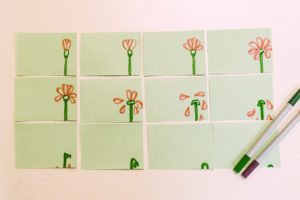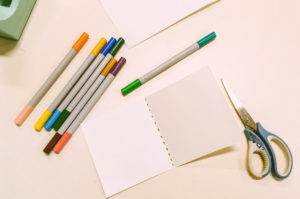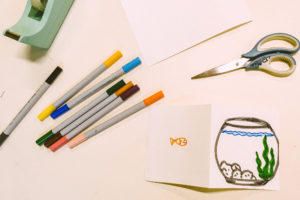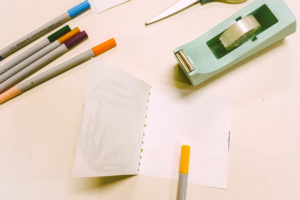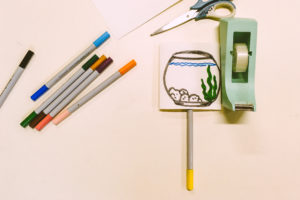Introduction
Animated films are an integral part of our lives. Children love them for entertainment and education, adults for their artistic expression. Many times animation is used in music videos, video explainers or commercials. Most animated films nowadays are computer generated, but there is still a strong presence of handmade animation. Hand made animation can be hand drawn, made with puppets, plasticine, cut out or made in some other sometimes even exsotic stop motion techniques.
Making stop motion animated films can help you develop different fine motor skills and include you in group work, both are competences that we often lack in our society. In this chapter you will get to know some of the optical illusion toys that were the predecessors of stop motion animated films. You will get a quick insight into different stop motion techniques that will help you choose the technique you want to use for your film.
AnimaVision in action |
|
|
|
||
Equipment and tools
For this chapter you will need some paper, scissors, markers and crayons for creating optical illusion toys along with a computer, tablet or smartphone with internet access for researching and watching different animated films.
Main section
Stop motion animation is a technique in which objects are moved and photographed individually but when the end result is played together they appear as a motion. Making stop-motion animation is very basic in theory. But a more advanced stop motion animation level needs a little bit more input. We will explain it in detail in different chapters of this handbook. In the end, it also provides much more interesting and visually pleasing results.
When creating stop motion animation we make small movements of the object in front of the camera and photograph each position separatly.
One of the many definitions of the verb: to animate that we can find in different dictionaries is: ‘to give life to”. Giving life to characters (or even objects like pencils, cups, fruit…) in stop motion animation is based on human perception of motion. Humans are able to see everything that is played more than 10-12 images per second as continuous movement. 10-12 images (or frames as filmmakers call it) per second is also the basic minimum standard of images per second when creating stop motion animations. More about frames and frame rate you can read in the chapter Camera in animation.
We can animate people, different objects, letters …
Optical illusion toys
But before stop motion animations became part of our lives there was a variety of optical illusion toys created that sparked human imagination and playfulness. Flip books or kaleidoscopes are one of the optical illusion toys that are still widely known. And those as magic lantern, phenakistoscope, zoetrope, thaumatrope and similar played more important role in history.
Magic lantern
It is the predecessor of a projector and was created in the 17th century. Magic lantern or Lanterna magica was widely used for entertainment till the middle of the 20th century when the slide projector came. Images drawn on glass plates were lit by a candle and projected on the wall. Although it did not enable moving images, it was a basis for nowadays film projector. We can still find it in some museums and private collections in our neighbourhoods.
This Magic lantern is kept in Posavski muzej Brežice (SI).
Video: Laterna magica – slides from Posavje Museum Brežice (LIJAmedia) – SI
This glass plates for magic lantern have been photographed and screened on a projection with modern technology. The glass plates are showing images from foreign countries, funny or educational stories, animal motives … and are kept in Posavski muzej Brežice (SI)
Flip book
A Flip book is an optical illusion toy that is easy to make. It consists of two or more pages arranged in a booklet. When viewed quickly they simulate an illusion of animation.
To make a Flip book it is better to use cardboard than paper, and make a template that will help you place your object always on the same position then draw and colour different positions of an object on separate pieces.
Video: Flip book example (LIJAmedia) – SI
Thaumatrope
Thaumatrope is an optical illusion toy consisting of two pictures that merge into one when turned around quickly enough. Pictures can be attached on strings or a stick (also a marker or pencil) and should complement one another. When you spin strings or the marker between your hands you get the effect of optical illusion.
Fold a rectangular piece of cardboard in the middle, draw one part of the picture on one side and the complementary part on the other side, tape a marker or pencil in the middle, then tape the cardboard together.
Video: Thaumatrope example (LIJAmedia) – SI
Making one of the optical illusion toys can be a great way to introduce stop motion animation to children and young people.
Different stop motion techniques
As we already explained in the introduction, animation films nowadays are often computer generated but this handbook is mainly focused on manual stop motion animation techniques. They require the development of different manual and social skills and can foster group work as well. When using manual stop motion techniques we create most of the objects, characters and backgrounds physically from paper, wood, cardboard, textile, plasticine… or some other material. This can be a very creative and social phase in the process. We move objects and characters physically in front of the camera, and photograph each movement or set of movements separately. But at the same time usage of modern technologies such as smartphones, tablets, computers, cameras and stop motion programs is essential to capture and edit images. This part of the process stimulates the development of digitall skills.
2D stop motion animation techniques
Silhouette animation
Silhouette animation is one of the earliest 2D stop motion animation techniques where characters are visible as black silhouettes. It is inspired by a game shadow play. Characters and objects usually have some movable joints or parts that are connected to the body with pins or removable glue pads. When using silhouette animation it is harder to animate facial expressions since in this technique we don’t have any option of detailed frontal view. One of the great representatives of silhouette animation is a german animator Lotte Reiniger.
Video: For the nature (LIJAmedia) – SI is an example of a silhouette animation made by young people on the topic of preserving environment during one-afternoon workshop.
Cut out
Cut out is a 2D stop motion technique in which we cut out characters, objects and backgrounds from paper, cardboard or fabric or some similar material. In contrast to silhouette animation, this technique gives us an opportunity to have a frontal view. Characters and objects usually have some movable joints or parts that are connected to the body with pins or removable glue pads. Cut out is similar to silhouette technique but it gives us more options. With the cut out technique we can also animate different human emotions and facial movements from the front view. For this we can make movable eyebrows, eye pupils, different positions of mouth and eyelids…
Video: Example of cut-out Si za prostovoljstvo / Why don’t you become a volunteer? (LIJAmedia) – SI
3D stop motion techniques
Plasticine/clay animation
Plasticine stop motion animation is a 3D technique in which we create our main characters, objects and sometimes backgrounds from plasticine, clay or some similar kneading material. When we use it for creating puppets we can wrap it around steel construction or armature to make them more stable. Plasticine is a very accessible material that can be easily transformed in different shapes or unusual objects out of our imagination and is often used in stop motion animations.
Video: Acceptance – (LIJAmedia) – SI
Puppet animation
Puppet animation is a form of 3D stop motion in which we use puppets as our main characters. In this stop motion technique we use puppets that we can build ourselves out of different materials such as styrofoam, mattress foam, fabric… Puppets are usually attached to the steel construction or armature that enables us to control their movements. Puppet stop motion animation is quite an advanced form of stop motion if wanted to be done properly and is often used in art film productions.
Animation with blocks
Sets of blocks are extremely popular among different age groups and have a variety of puppets and building blocks. They are widely used for making 3D stop motion and can be a great way to start working with puppets. But at the same time it is possible to make very complex films with blocks.
Pixelation
Pixelation is a 3D stop motion technique in which we don’t create characters and objects by ourselves but instead we use humans or existing objects like chairs, cups, pencils… or some other things as the main object. The person or an object takes a new position in every shot and is photographed in this position. All shots are then combined into sequences that are combined into a movie. The animations can either be shot from normal positions and perspectives, like a regular movie or from above with people and objects laying on the floor.
A very simple and funny pixelation video can be made by photographing different face expressions.
Exercises
- Look around your home or search on the web and find some of the optical illusion toys. It can be one of those listed above or some other.
- Make your own optical illusion toys from the list above.
- Watch some animated movies and try to figure out in which technique they were made.
- Stop motion animation has a rich and versatile history. And there are many stop motion animation film productions existing also today. They can be a great source of inspiration. Research them!
- There is a big possibility that there was or is a stop motion animation (or any other animation) film maker from your area. Get to know their work or maybe even them personally.
Related topics and links to external resources
Chapters: Basics of stop motion animation (Vision)
Puppet animation
Video: Slovo (ZVIIKS-SI)
Pixelation
Example of regular perspective, Das Leben is hart – StopMotion is haerter (GuYcreations) – DE
Silhouette animation
Video: The Ornament of the Lovestruck Heart by Lotte Reininger (1919) – with music of an Heloise Ph. Palmer from Halle (Germany) produced in 2019
About animated film
Video: Debate with film animator Leon Vidmar (LIJAmedia) – SI
Methodology
As already mentioned before it is quite a good entry into stop motion if you get acquainted with some of the optical illusion toys. It can be a great start to make a workshop on that in the introduction phase of your group work. As well as watching different animated movies, going to a stop motion festival or inviting some stop motion animation film makers to visit in your area can be a great motivation for you or a group that you are working with.
Terminology
stop motion animation, perception of vision, frame, framerate, optical illusion, magic lantern, flip book, thaumatrope , silhouette animation, pixelation
